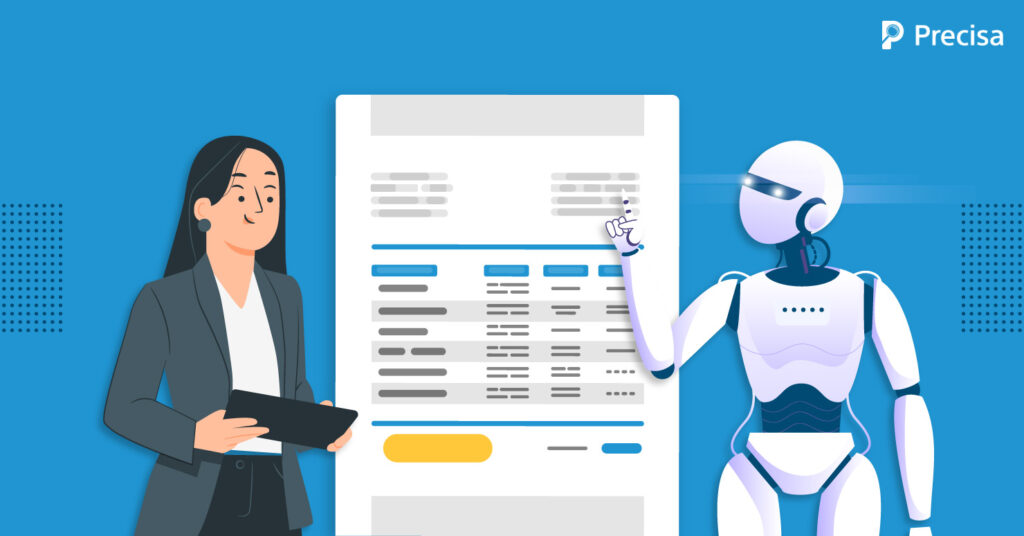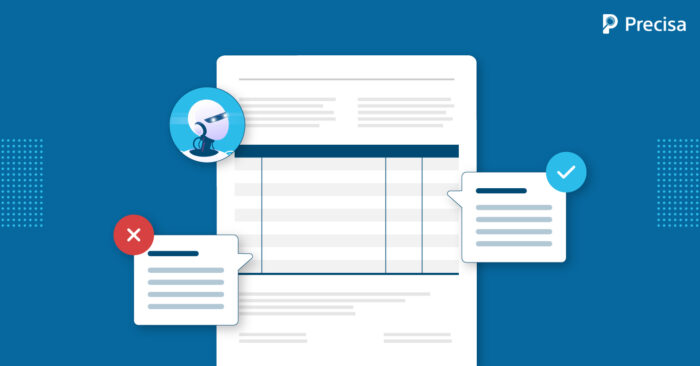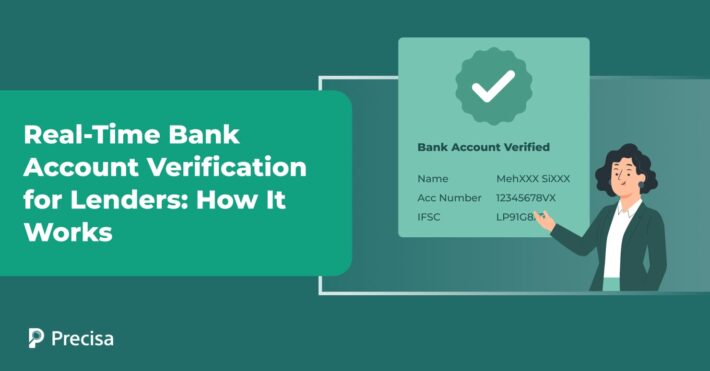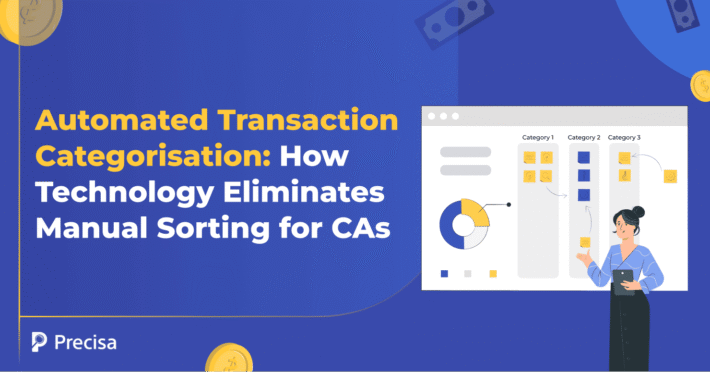Bank Statement Analysis: Uncovering Patterns with AI driven Insights

Emerging forces, like geopolitical tussles, socioeconomic factors and climate change, have increased the demand for improved risk management in the financial services sector. Breakthrough technology like AI and ML, profuse amounts of data, and new business models are redefining how banks interact with consumers, third parties, and internal processes. A recent report by Business Insider indicates that nearly 80% of banks are aware of the potential benefits of artificial intelligence (AI) in the banking sector, with advanced analytics allowing them to uncover patterns and trends hidden within bank statements, allowing them to assess risk better. In this article, we explore the effectiveness of AI-driven insights in bank statement analysis, including its recent trends, advantages, and challenges.
How Does Bank Statement Analysis Play a Role in Lending Risk Assessment?
Risk assessment in lending through bank statement analysis is evaluating a borrower’s creditworthiness by analysing their bank statements.
This procedure assists financial organisations in assessing the possible hazards of providing money to an individual or a business. Income stability, cash flow patterns, debt responsibilities, and overall financial health are all elements examined by bank statement analysis.
Bank statement analysis in risk assessment: An example
Consider a small business that is looking for a loan. The lender can check the consistency of income deposits, discover any abnormalities or potential red flags, and evaluate the business’s capacity to generate sufficient cash flow to repay the loan by analysing the business’s bank statements.
They may also examine the company’s payment history for outstanding debts, frequent overdrafts, or symptoms of financial difficulty.
Therefore, bank statement analysis enables lenders to determine the risk level of the borrower’s credit portfolio by identifying unidentified liabilities (such as loans and credit card bills) that may have an impact on the borrower’s capacity to repay the loan.
In order to make better lending decisions, it is an essential tool for lenders to assess the stability and creditworthiness of borrowers.
The Role of AI in Bank Statement Analysis
The AI-powered Bank Statement Analysis utilises machine learning and artificial intelligence to quickly and accurately evaluate and analyse bank statements. This is how it goes:
1. Data Extraction
To minimise errors and eliminate human data entry, the system securely collects pertinent financial information from the borrower’s bank statements.
2. Categorisation and Trend Analysis
Transactions are automatically classified by the software as income, expenses, and other relevant categories. To determine spending habits and financial behaviours, it also performs trend analysis to enable institutions to stay ahead of the competition.
3. Financial Health Assessment
The AI-Driven Bank Statement Analysis examines the borrower’s financial health by examining important factors, including income stability, cash flow, debt-to-income ratio, and saving habits, using advanced algorithms.
4. Account Aggregator Enablement
Bank Statement Analysis also allows financial institutions to obtain and analyse consolidated financial data from borrowers’ bank accounts. The link with account aggregator platforms enables the borrower’s financial status to be evaluated securely.
4 Key Benefits of the AI-Driven Bank Statement Analysis
An AI-powered bank statement analysis has various advantages for both banks and their consumers. Here are some of the primary benefits:
1. Improved Risk Assessment
The Bank Statement Analysis tool gives lenders a comprehensive understanding of the borrower’s financial status, enabling them to make more educated decisions and efficiently manage risk.
2. Enhanced Efficiency
Financial institutions may process loan applications more quickly and accurately thanks to the automated examination of bank statements, which greatly cuts down on the time and work required for credit screening.
3. Seamless Integration
The solution is compatible with current CAM and credit underwriting platforms, guaranteeing a smooth implementation procedure and system compatibility.
4. Cost Reduction
Owing to its capabilities, the Bank Statement Analysis solution dramatically lowers operating costs and boosts overall productivity by automating routine operations and decreasing the need for human data entry.
Using AI to Uncover Patterns and Trends in Bank Statement Analysis for Risk Assessment
AI improves risk assessment by analysing bank records, recognising patterns, and delivering important insights on potential dangers for individuals or organisations. For example:
1. Cash Flow Analysis
Bank statements can be examined by AI algorithms to spot trends in cash flow. AI algorithms can spot seasonal fluctuations, patterns, and abnormalities in cash flows by tracking transaction data and account balances over time. Banks use this study to determine a company’s financial stability and loan repayment capacity.
2. Fraud Detection
AI systems are able to detect questionable transactions and spot examples of possible fraud. AI algorithms may successfully identify fraudulent activity by examining patterns in bank statements, such as unexpected transaction amounts, frequent transfers to ambiguous recipients, or abrupt changes in spending habits.
3. Customer Segmentation
AI-powered bank statement analysis can assist banks in segmenting their customer base depending on financial behaviour. AI algorithms can categorise customers into distinct risk profiles by recognising similar patterns in purchasing habits, investing choices, or savings patterns. Banks may adjust their products and risk assessment strategies to each consumer segment thanks to this segmentation.
4. Risk profiling
Bank statement data can be analysed by AI algorithms to build risk profiles for individuals or organisations. AI may thoroughly analyse the overall risk associated with a specific entity by assessing parameters such as income, expenses, debt levels, and payment history.
5. Anomaly detection
AI-powered anomaly detection approaches can discover abnormal or suspicious transactions in bank statements. AI models can identify transactions that depart considerably from normal behaviour by analysing transaction patterns, historical data, and behavioural norms.
6. Regulatory compliance monitoring
AI can assist in monitoring bank statements for regulatory compliance. AI algorithms enable banks to maintain regulatory compliance and mitigate related risks.
7. Portfolio risk assessment
AI-driven analysis can evaluate the risk associated with an institution’s loan or investment portfolio. AI can detect common risk factors, correlations, or concentration hazards within the portfolio by analysing bank statement data from multiple organisations. This knowledge enables institutions to better manage portfolio risks and optimise risk-adjusted returns.
Summing Up
AI-powered insights help improve risk assessment for better lending decisions by transforming bank statement analysis. AI systems reveal hidden tendencies in financial behaviour by automating data extraction, normalisation, pattern identification, and anomaly detection. Increased accuracy, efficiency, real-time monitoring, and early alerts are among the advantages.
To address concerns about data privacy, discrimination, and openness, financial organisations should welcome AI advancements which enable them to offer fair and unbiased risk assessment practises, while also utilising AI-based solutions to streamline the process.
Introducing Precisa, a cutting-edge financial data analysis system that is revolutionising risk assessment. It reduces manual review by offering actionable data via a configurable dashboard. It reduces human errors by quickly examining critical metrics.
Precisa’s Bank Statement Analyser systematically analyses statements, detects fraud, and assigns a Precisa score for precise creditworthiness evaluation. Also, you can save time, make informed decisions, and embrace automated analysis.
Say goodbye to manual evaluations and hello to the power of automated analysis with Precisa.
Book a free trial to learn more about Precisa!




